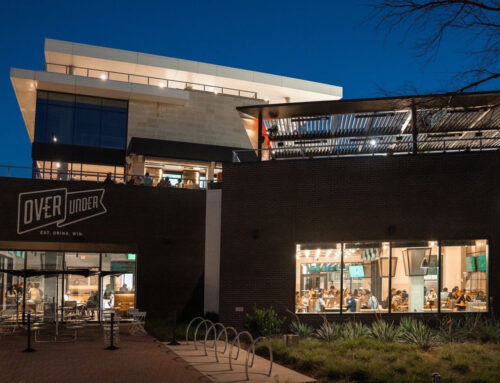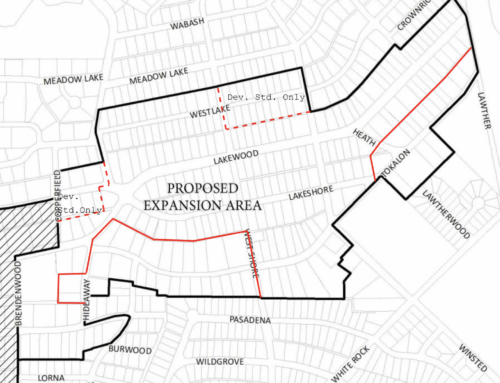In 1905, cotton gin manufacturer Robert S. Munger began selling lots in what he hoped would become one of the most renowned residential developments in the Southwest – Munger Place.
Munger and brother Collett (manager of the “Place”) worked to create an addition featuring exquisite homes in a choice location, and they succeeded. The first deed restrictions in Texas were those placed on Munger Place homes.
Considered the most exclusive street in the neighborhood, Swiss Avenue was to be developed with homes two stories high and offered for sale at a minimum of $10,000. Each home had to be constructed at least 60 feet from the front property line.
“Munger Place is right in the heart of the city,” a 1912 promotional brochure states, “far enough from business to be quiet – near enough to be convenient. It is high and cool, with abundant breezes in summer. (The water main from new White Rock Reservoir passes directly through, which will soon supply an abundance of pure water at high pressure.)”
In its first phase of development, the 140-acre residential area consisted of 20 blocks on Swiss, Gaston, Junius, Worth and Crutcher Streets between Fitzhugh and Munger.
The development was so successful, it was enlarged three times by the Munger brothers. Live Oak from Fitzhugh to Dumas was added in 1910; lots on Bryan were marketed in 1914; and in 1922, Bryan Parkway and Swiss were extended to LaVista.
Because of its close proximity to Downtown – “15 minutes by carriage and 10 minutes by motor” – the development attracted many of the City’s business leaders, who could catch the streetcar at Munger Place and be Downtown in 12 minutes.
According to the book, “Reminiscences: A Glimpse of Old East Dallas,” edited by Gerald Saxon, early Munger Place residents included: department store owner W.A. Green; Jesse Padgitt, co-owner of the Padgitt Brothers Co., one of the country’s largest leather and harness companies; Carrie Neiman, a founder of Neiman-Marcus; bakery owner Joseph Schepps; Ben H. Stephens, founder of the Magnolia Petroleum Co.; Edward Titche, president of Titche-Goettinger; cotton magnate M.H. Wolfe; Dr. R.W. Baird, a founder and director of the Dallas Medical and Surgical Clinic; Bishop Joseph Lynch of the Catholic Diocese of Dallas; Rufus Higginbotham, founder of dry goods firm of Higginbotham, Bailey and Logan; James B. Cranfill, founder and editor of the Texas Baptist Standard; and George W. Aldredge, chairman of First National Bank of Dallas.
In last month’s article, we reported that the development in East Dallas led to the establishment of the Lakewood Country Club in 1912. While the facility was built following the highly successful development of Junius Heights (1906), it was the cotton field now known as Munger Place that set the pace for growth in East Dallas/Lakewood.





